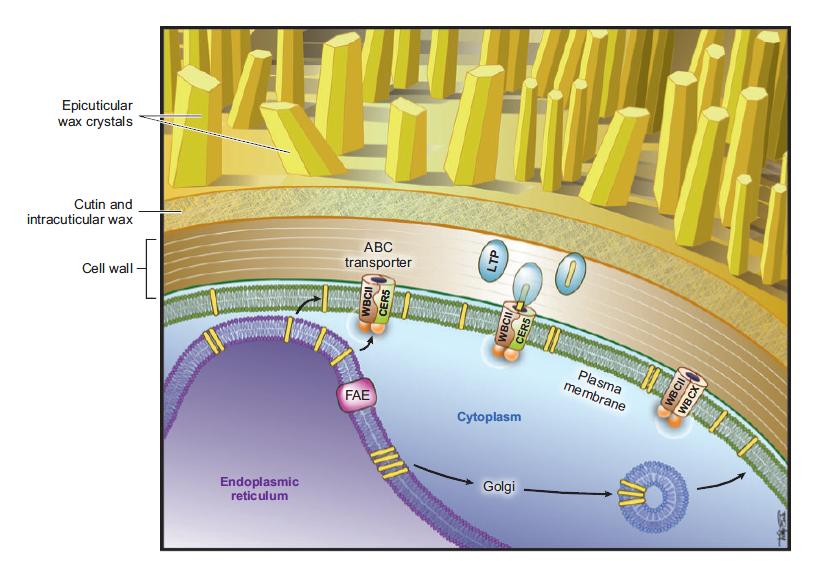Aaron D
Blueberry coat color
Evidence presented by Albrigo et al. (Media:Albrigo_color.pdf) points to "waxy bloom" contributing highly to coat color in highbush blueberries. Other possible variables (such as pH and anthocyanins) were implicated in juice color but showed little to no influence on coat color. Therefore, genes involved in wax production and secretion were the focus of my research.
A direct connection between beta-diketone presence and coat color was made by Sapers et al. (Media:Sapers_color.pdf). Berries with more beta-diketones displayed a higher degree of blue hue. Multiple sources also mentioned a connection between beta-ketones and blue hue on blueberries.
Samuels et al. (Media:Samuels_color.pdf) provided a thorough analysis of wax production in Arabidopsis. Additionally, pathways presented within the paper indicated genes involved in ketone production. Based on the relatedness of two genera, I searched for orthologs of Arabidopsis in the Vaccinium genome. Considerations taken when choosing genes included pathway position, ???
Target genes: MAH1 (ketone production), FATB (wax production), WSD (wax production), CER6 (fatty acid elongation), WBC11 (transporter: wax secretion)
Source: Media:Samuels_color.pdf
Source: Media:Samuels_color.pdf
Finding orthologs
Samuels et al. provided MIPS accession numbers for each gene. Entering each number into The Arabidopsis Information Resource provides links to FASTA sequences for the gene in Arabidopsis. Scaffolds of the V. corymbosum genome containing possible orthologs were found using the tBLASTx tool on the Vaccinium website. Scaffolds were chosen based on E-score. SSRs (and primers for each SSR) were found for each scaffold using the SSR tool on the Vaccinium website. SSRs for Marker Assisted Breeding (MAB) were chosen based on proximity to the region of the scaffold aligning with the submitted Arabidopsis gene. Also, di- and trinucleotide repeats of 5 or greater were favored and PCR products were required to fall between 100 and 700 bp.

